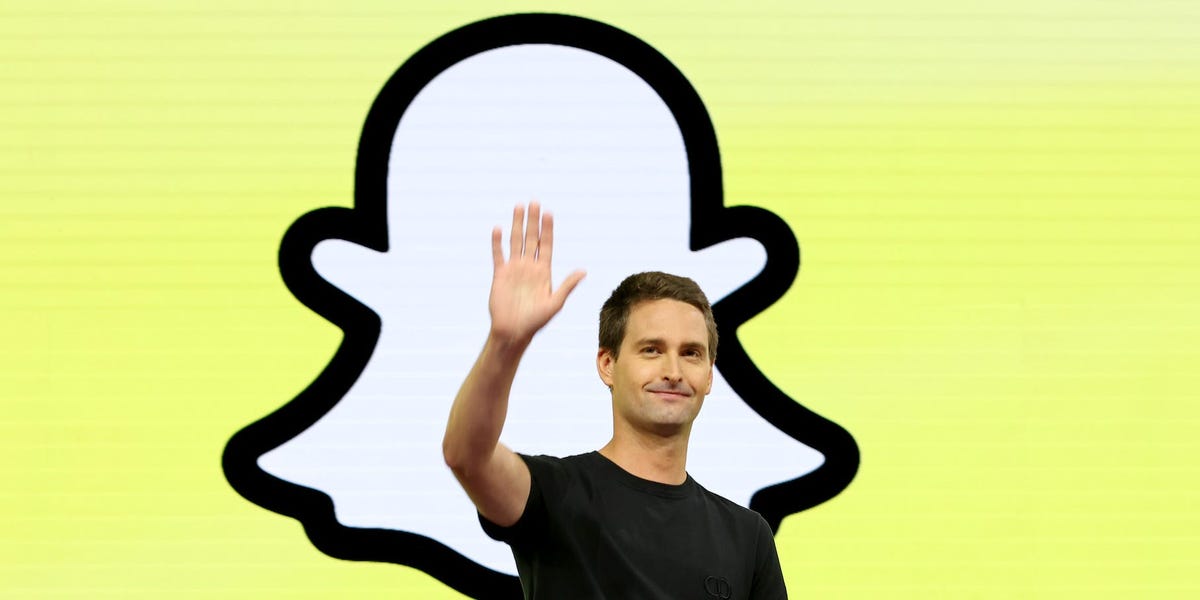Analysts at the World Advertising Research Center forecast Snap’s ad revenue will grow by 13.7% to $5.2 billion this year, up from a 0.1% increase in 2023.
Having recorded “negligible” political ad spend over the past three years, WARC’s analysts predict Snap will bring in around $64.8 million in political ad dollars in 2024, up 85% on the prior year and around five times as much as during the 2020 election cycle.
The biggest year-over-year growth is set to come from political and advocacy advertisers in the US, ahead of the November presidential election, WARC said.
Beyond the political ad boost, Snap’s expected return to double-digit revenue growth will be driven by the platform leaning on artificial intelligence for ad optimization, an improved content experience, and user growth, according to WARC.
Snap’s young user US base is attractive to political campaigns hoping to woo first-time voters
A Business Insider review of Snap’s political ads library found campaigns for US advertisers on both sides of the aisle, such as Biden for President, the Republican National Committee, the firearm industry trade association NSSF, and Rep. Alexandria Ocasio-Cortez.
Snap, which says 80% of its 100 million users in the US are over 18 years old, is an attractive platform to reach first-time voters, said WARC head of content Alex Brownsell.
Governments such as the states of Texas and Los Angeles are among those that have recently advertised on Snap to encourage voter participation and registration.
“There’s a sense of it being a positive environment and a place for fun and joy,” Brownsell said. “That’s always going to be a better environment than a snake pit like X where, yes, the audience is there, yes, you may hit your reach numbers, but the effectiveness of your ads may be affected by how people feel using the platform.”
Political advertisers have welcomed some of Snap’s ad updates but still want more formats and targeting options
While Snap might not have the resources of the likes of Google and Meta, the company has made efforts to have a constant dialog with political advertisers since at least 2020 and sends out a regular newsletter, said Liz Bennett, partner at Middle Seat Digital, a marketing agency that works with progressive causes and candidates.
“I would give them props for the amount of work they put into being a reliable source of support for our clients,” Bennett said.
Danielle Butterfield, executive director of the progressive political action committee Priorities USA, said Snap had made recent ad product updates that she expects to be effective in the lead-up to the final November push. Those have included the Snap Stars program, which links advertisers with micro and macro Snap influencers, plus the ability to reserve ad inventory across popular Snap partner content, such as ESPN, she said.
“Content creators on Snap have an authentic relationship with their followers, and we want the way they talk about politics and issues to be true to their platform and the audiences they typically engage with,” Butterfield said.
To be sure, with US political ad spend forecast to exceed $12 billion in 2024, according to Emarketer, Snap will be a drop in the ocean for most political advertisers. Traditional media still takes the lion’s share of political ad dollars. On digital channels, campaigns are more likely to look to connected TV, Meta, and Google, per Emarketer. (TikTok doesn’t accept political ads.)
It’s not just that Snap reaches fewer potential voters, with its 414 million daily active users compared to Meta’s billions. Butterfield of Priorities USA said she would like Snap to make improvements like increasing the availability of non-skippable video inventory and introducing narrower targeting segments in order to reach very specific communities. Middle Seat’s Bennett said political ads on Snap don’t tend to perform as well as other channels, though the agency has seen some success on accounts that have larger name recognition.
Snap said it would share more information about its plans for the 2024 elections in the coming weeks.
“Millions have used Snapchat to learn about upcoming elections and key issues, as well as register to vote,” said Jason Poinsette, US head of government and political advertising at Snap, in an emailed statement. “As a platform that reaches over 100 million Americans, we look forward to seeing how campaigns and organizations engage Snapchatters in 2024 to help them make informed decisions.”
While it is set to grow substantially, politics is one of the smaller categories of advertising on Snap. WARC predicts “business and industrial” will be the biggest spending vertical on the platform in 2024, generating around $756.8 million in revenue for the company. And even with this quadrennial political advertising boost, growth of 13.7% would still fall short of the 20% ad revenue growth that The Verge reported as a “stretch goal” Snap CEO Evan Spiegel had set for the company this year.




